Verticillium is more severe when pH is 7.4 to 8.6, according to Alberta research
WINNIPEG — Verticillium stripe is a more common and troublesome disease for canola growers on the eastern half of the Prairies, particularly in Manitoba. Meanwhile, verticillium isn’t a huge issue in Alberta. There may be a simple reason for this geographic variation — soil pH. Researchers at the University of Alberta have learned that Verticillium […] Read moreTag Archives verticillium stripe
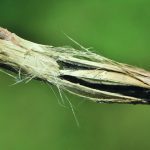
Scout for fungal diseases in the fall
Harvest is a good time for producers to see how much sclerotinia slipped through the control cracks during the season
Glacier FarmMedia – Canola growers can evaluate levels of sclerotinia in their fields when it’s time to swath the crop, and the Canola Council of Canada says that’s the ideal time to scout. Sclerotinia is typically one of the top canola diseases on the Prairies, although disease surveys found few infections in Manitoba last year. […] Read more
Verticillium stripe in spotlight as threat grows
A U of A study just wrapped up, and four Canola Agronomic Research Program projects are now investigating the disease
Glacier FarmMedia – If you’re a canola grower on the Prairies, you know there are no chemical solutions or varieties to kill or resist soil-borne verticillium stripe disease. You may also know the handful of management practices that can thwart the disease to some extent. And if a crop has been damaged by it, you […] Read more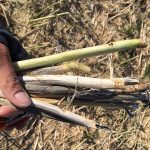
Verticillium’s impact studied
WINNIPEG — For a few years, canola industry leaders have been worried about verticillium stripe and its impact on crop yields. Reports out of Europe suggest the fungal disease could cause a wide range of losses, anywhere from 10 to 50 percent on oilseed rape. However, the extreme losses are usually confined to a tiny […] Read more

Disease roundup: Verticillium has breakout year
Plant pathologists are still sorting through the data, but 2023 may become the year that verticillium stripe emerged a major problem for canola growers in Western Canada. In 2022, Saskatchewan Agriculture staff discovered verticillium is a common disease in the eastern part of the province. In the fall of 2023, producers in other parts of […] Read more
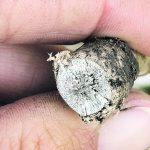
Researchers study verticillium yield losses
WINNIPEG — For a few years, canola industry leaders have been worried about verticillium stripe and its impact on crop yields. Reports out of Europe suggest the fungal disease could cause a wide range of losses, anywhere from 10 to 50 percent on oilseed rape. However, the extreme losses are usually confined to a tiny […] Read more

Farmers watch as verticillium extends its reach in Sask.
The canola disease appears to be moving west and north after being found in eastern part of the province last year
Anecdotal evidence suggests that verticillium is moving north and west across Saskatchewan. In 2022, Saskatchewan Agriculture staff discovered that verticillium stripe, a disease of canola, was commonplace in the eastern part of the province. This fall, producers in other regions have found the disease in their canola. “I’ve got verticillium in Davidson like you wouldn’t […] Read more
Verticillium spreads in Saskatchewan
Anecdotal evidence suggests that verticillium is moving north and west across Saskatchewan. In 2022, Saskatchewan Agriculture staff discovered that verticillium stripe, a disease of canola, was commonplace in the eastern part of the province. This fall, producers in other regions have found the disease in their canola. “I’ve got verticillium in Davidson like you wouldn’t […] Read more
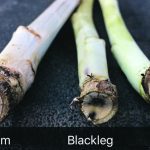
It’s time to scout for blackleg and verticillium stripe
Diseases that are present in fields today will determine how long the crop rotation should be, as well as which canola hybrid to use
Canola farmers need to tackle fungal diseases head on by walking through their fields and learning firsthand the extent of the problem, said an expert. The idea behind scouting isn’t to protect this year’s crop from blackleg and verticillium stripe, said Courtney Boyachek, an agronomy specialist with the Canola Council of Canada. “But it does […] Read more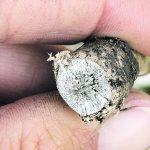
Verticillium has still not been confirmed in Alta.
As pathologists continue to check for verticillium stripe, researchers find a link between it and blackleg
Verticillium stripe, a disease of canola, is nearly everywhere in Manitoba and is now common in eastern Saskatchewan. But it’s not in Alberta. Plant pathologists in Alberta have searched for verticillium in post-harvest disease surveys since 2020. So far, they haven’t found it. “In 2020, we found suspicious symptoms in about four fields, but the […] Read more



